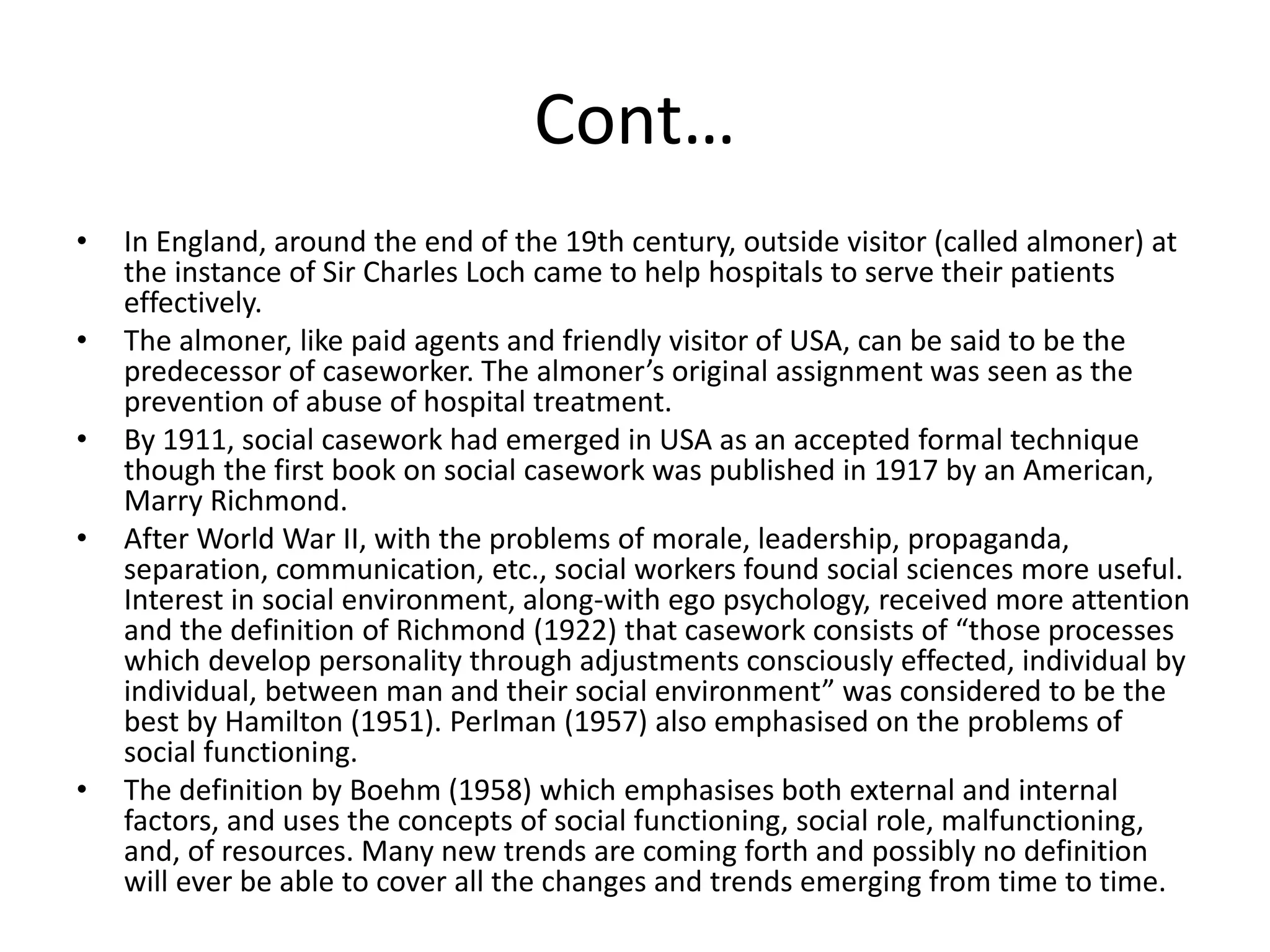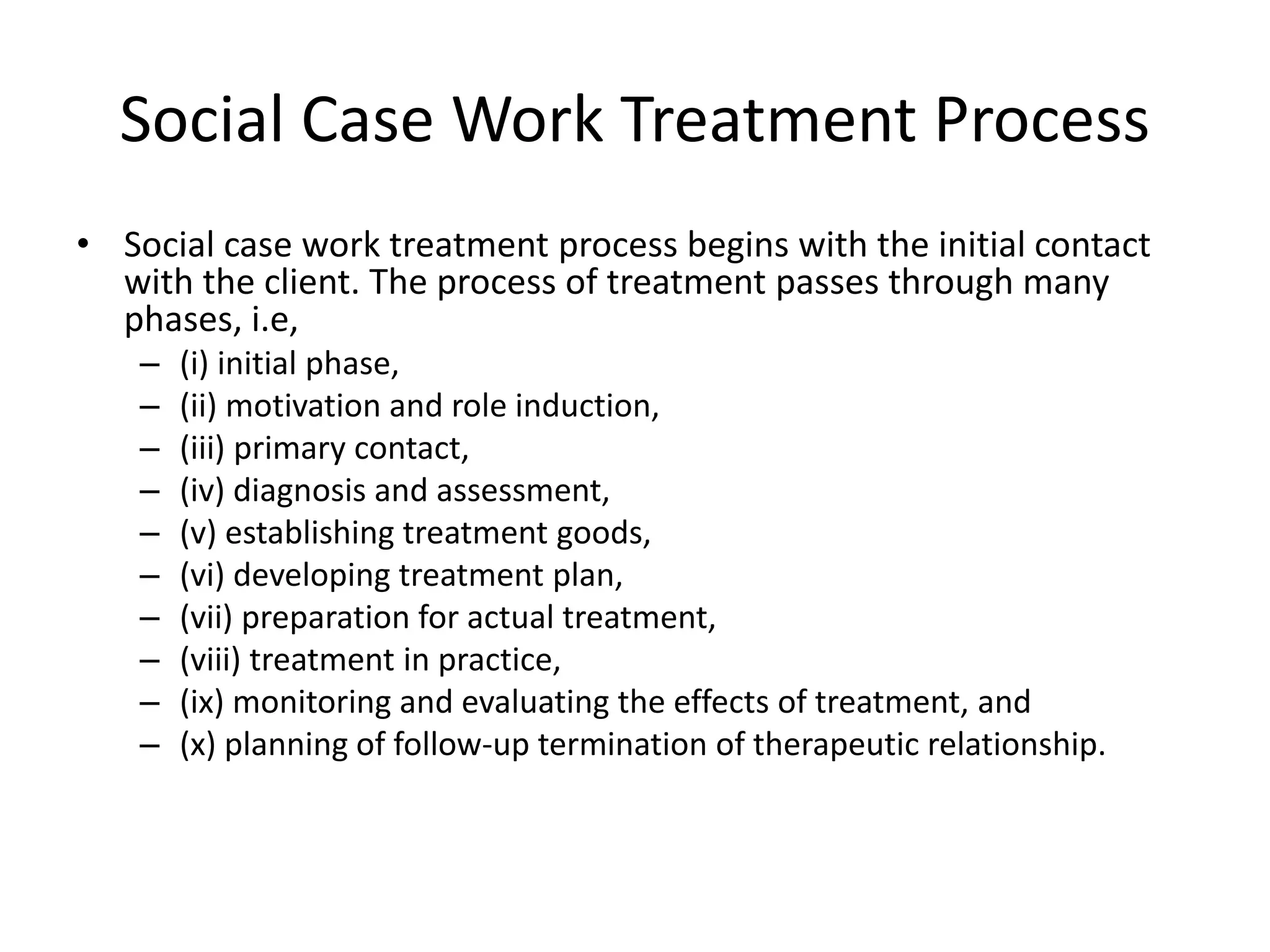The document provides an overview of social casework including its history, definitions, objectives, components, techniques, and types of problems addressed. Some key points:
- Social casework aims to help clients better adjust their relationships and develop self-sufficiency through understanding their full circumstances and motivations.
- It originated in religious/charitable work and evolved into a scientific approach focused on treating each person as a unique individual.
- The main objectives are helping clients mobilize their own capacities to solve problems and achieve a healthy adjustment between their situation and environment.
- It involves understanding clients' problems in the context of internal/external forces and social functioning, while also considering their resources and agency/community support













































